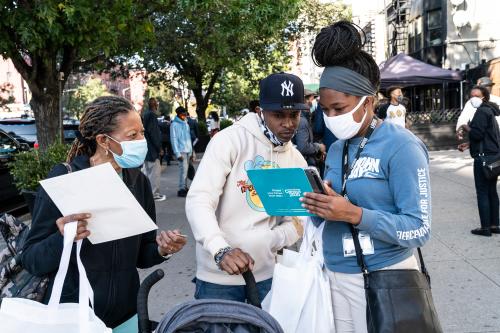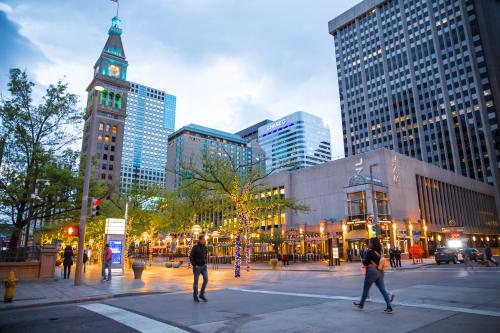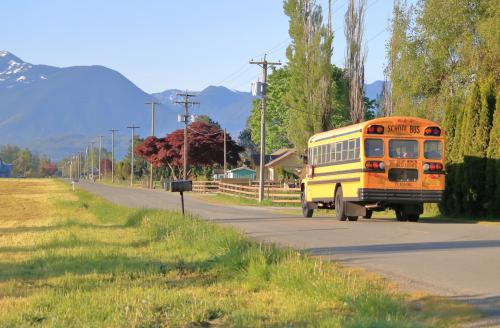This report was written before the first release of the 2020 Census on April 26, 2021. Edits below reflect changes that take into account that release.
Over the coming months, the U.S. Census Bureau will roll out the results of the 2020 census, its once-a-decade headcount that will give us precise details on the size, growth, age, and racial-ethnic makeup of the nation’s population. In the lead-up to that over the past year, the Bureau has released the results of other large surveys and studies, which I have analyzed to pinpoint key demographic trends that the decennial census is likely to confirm.
These trends include an unprecedented stagnation in population growth, a continued decrease in Americans’ geographical mobility, more pronounced population aging, a first-time decline in the size of the white population, and rising racial and ethnic diversity among millennials, Gen Z, and younger groups, which now comprise a majority of the nation’s residents. Below, I recap those trends and conclude by examining alternative Census Bureau projections that reinforce the crucial role immigration will play in future population growth.
Unprecedented stagnation in population growth
For much of the recent past, the U.S. has been one of the most rapidly growing countries in the industrialized world. This was especially true in the last half of the 20th century, due to the post-World War II baby boom and rising immigration in the 1980s and 1990s. The initial results from the 2020 Census show the second smallest decade-long growth in America’s history.

Recently released Census Bureau population estimates show that from July 1, 2019 to July 1, 2020, the nation grew by just 0.35%. This is the lowest annual growth rate since at least 1900.
National population growth began to dip after 2000, especially after the Great Recession and, in recent years, due to new immigration restrictions. Yet the 2019-to-2020 rate is well below most growth rates over the past 102 years, and less than half the level observed as recently as 2000.
Part of this sharp decline can be attributed to the COVID-19 pandemic, which brought more deaths and further immigration restrictions. Still, the entire 2010s decade was one of fewer births, more deaths, and uneven immigration. Low natural increase levels (a result of the aging of the population) will likely continue regardless of federal policy, suggesting that only increased immigration can become a driver of U.S. growth.
Continued decrease in geographic mobility
Another indicator of the nation’s demographic stagnation is its low level of geographical mobility. In the year before COVID-19 swept the country, a smaller share (9.3%) of Americans changed residence than in any year since 1947, when the Census Bureau first started collecting annual migration statistics. This was calculated from the Census Bureau’s Current Population Survey Annual Social and Economic Supplement, which can be used to track residents’ relocations through March 2020.

U.S. migration trends have shown a fairly consistent decline since the economically prosperous late-1940s to 1960s, when approximately one-fifth of Americans changed residence annually. By the late 1990s, only about 15% to 16% of the population moved each year, dropping to 13% to 14% in the early 2000s. Migration dropped even further—to the 11% to 12% range—after the Great Recession, reflecting the immediate impact of housing and labor market crashes. Since 2012, it has continued dropping to last year’s new low of 9.3%.
Recent migration declines occurred among both local, within-county moves (which are largely made for housing and family reasons) as well as for longer-distance moves between labor markets—though there was a sharper decline in the former. A good part of these declines occurred among young adult millennials, many of whom remained “stuck in place” even in the late 2010s.
It is certainly possible that mobility rates could tick up in the 2020-to-2021 period because of COVID-19-related migration away from cities or moving back in with family members. Yet such moves might be temporary at best, and there is a clear possibility that the long-term stagnation in the nation’s geographic mobility over the past decade could reemerge as the pandemic subsides.
A pronounced aging of the population
The 2020 census will also highlight the sharp growth divide between the old and the young in America, as suggested by estimates from the Census Bureau’s National Demographic Analysis. They show that between 2010 and 2020, the number of people over age 55 grew by 27%, which is 20 times larger than the growth rate of the collective population under 55 (1.3%). The largest driver of this divide is the baby boomer generation, who passed the age of 65 during the past decade, increasing the size of the 65- to 74-year-old age group by a half.

Among the younger generations, millennials helped power the modest growth of the 25- to 34-year-old population, though the smaller generations following them tamp this growth rate down to close to zero.
We can expect all states, metro areas, and most counties to show gains in their 55-and-older populations. Even in demographically stagnating areas, the “aging in place” of the baby boomer generation within them will lead to population growth for seniors.
The story is much different for the younger population. With their national growth rate at nearly zero, migration—either in or out—will determine if an area registers a gain or loss of young people. This is reflected in Census Bureau estimates for 2010-to-2020 state changes in under-18 populations: Fully 31 states register losses in their youth population, including large swaths of the Northeast, Midwest, and interior South.
In contrast, 19 states and Washington, D.C. show population gains in young people, largely due to the in-migration (from outside the country and from other states) of youth and families with children. While the nation as a whole is facing heightened age dependency (the increased ratio of senior retirees to the working young), these places may be in a better position to bolster their future young labor forces.
A first-time decline in the nation’s white population
The most recent Census Bureau estimates by race show a small decline of 16,612 in the nation’s white population over the 2010-to-2019 period. If this trend is confirmed with the full 2020 census, the 2010-to-2020 decade would be the only decade since the first census was taken in 1790 when the white population did not grow.

This decline in the white population is a major driver of the nation’s demographic stagnation. White population gains in recent decades have grown smaller over time, from 11.2 million between 1970 and 1980 down to 2.8 million between 2000 and 2010. But a white population loss between 2010 and 2020 would be unprecedented.
The white population decline is largely attributable to its older age structure when compared to other race and ethnic groups, leading to fewer births and more deaths relative to its population size. In 2019, the median age for white Americans was 43.7, compared to 29.8 for Latino or Hispanic Americans, 34.6 for Black Americans, 37.5 for Asian Americans, and 20.9 for persons identifying as two or more races. While white fertility may have taken an accentuated dip due to delayed marriage and childbearing for millennials—whose lives continued to impacted by the Great Recession—the long-term decline projected in the white population is due to its increased aging.
This means that other racial and ethnic groups are responsible for generating overall population growth. The U.S. grew by a total of 19.5 million people between 2010 and 2019. Latinos or Hispanics contributed 10 million people to that total—over half of the nation’s growth. Asian Americans, Black Americans, and persons of two or more races contributed 4.3 million, 3.2 million, and 1.7 million people, respectively. These groups constituted the main engines of the nation’s growth, and are likely to do the same going forward.
Greater racial diversity among millennials and Gen Z
Census Bureau population estimates released last year revealed that more than half of the nation’s total population are now members of the millennial generation or younger. And while these younger generations—born in 1981 or later—are not growing as rapidly as older age groups, they are far more racially diverse.


One reason for this is that the white population declines discussed above are more pronounced among the young. Since 2000, the under-18 white population registered absolute population losses. Meanwhile, millennials and their juniors were born during years of higher immigration. In many ways, from the 1980s through the early 2000s, immigrants and their children have contributed to both the growth and diversity of the nation’s younger population—however, more recently, natural increase rather than immigration is the primary source of Latino or Hispanic population growth.
This has led to stark generational differences in diversity. About 60% of the U.S. population identifies as white alone; that figure reaches more than 70% for baby boomers and their elders, but only about half for the combined Gen Z and younger populations, with nearly two-fifths of those groups identifying as “Black or brown.”
These generational differences are important for public and private sector planning, especially with respect to the needs of the increasingly diverse younger population. The generational divide in diversity also fosters what I have called a “cultural generation gap,” which has impacted politics in ways that are sometimes divisive. It is important to understand that as these younger, diverse generations age, their tastes, values, and political orientations will become the nation’s “mainstream.” As we enter 2021, the first millennials have already turned age 40.
Immigration is essential for countering further stagnation
The above analyses make plain that the nation is in the midst of unprecedented demographic stagnation. Much of this is attributable to lower fertility rates and increased mortality associated with an aging population. The COVID-19 pandemic is certainly accentuating this pattern.
Yet even before the pandemic, census-based population projections suggested future population growth levels that lie well below those the nation has previously experienced. The main projection suggests that if current trajectories of fertility, mortality, and immigration persist, U.S. population growth between 2020 and 2060 would be 22% (to 404 million people). That is half the 44% growth rate of the previous four decades.

This projection assumes an annual immigration level roughly twice that of the year before the pandemic. If that lower immigration level were to persist, growth from 2020 to 2060 would be reduced to just 14% (376 million people) for an average annual growth rate of 0.32%. (A projection assuming zero immigration would lead to a net decline in the U.S. population over that 40-year period.)
An even larger consequence of lower immigration would be a stagnating youth population. Under the Census Bureau’s main projection, between 2020 and 2035, the nation’s under-18 population would grow by 4%. But under its low-immigration projection, there would be zero growth in the under-18 population. In both projections, the over-65 population would grow by at least 38%.
One way to secure more rapid growth of the youth population would be to increase immigration to three times the current level. Under this scenario, the youth population would increase its growth to 9% over the next 15 years.
These alternative projections show that given our rapidly aging native-born population, immigration will ensure growth—especially among the critical youth and labor force populations
Awaiting the 2020 census
As the full 2020 census results are released over the course of this year, we will gain a more thorough understanding of national population trends, with great detail for communities across the country. But other available data already reveals the broader picture: We are becoming a country with historically low population growth, rapid aging, and greater racial and ethnic diversity, especially among the nation’s youth.
Beyond confronting the COVID-19 crisis and fallout, the next decade will bring with it new challenges and opportunities in dealing with greater age dependency, increasing racial and ethnic harmony, and resolving spatial disparities—all in the context of a less demographically dynamic nation. It will also call for increased attention to the role of immigration to counter even further stagnation.
The Brookings Institution is committed to quality, independence, and impact.
We are supported by a diverse array of funders. In line with our values and policies, each Brookings publication represents the sole views of its author(s).






